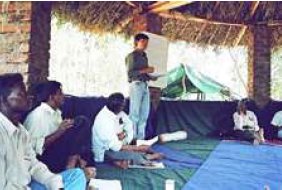By Snehlata Nath, Keystone Foundation
The collection of gums and resins is common in various parts of India. Done mostly for commercial trade, India is now the third largest exporter of gums and resins in the world. However, some methods adopted for extraction are unsustainable, causing significant damage to the tree. There is also little information about quality parameters, markets and trade and harvesting methods.
With the aim of bringing together and sharing information amongst a diverse range of people working with gums and resins, two workshops were organized through the members of the Non-Timber Forest Products Exchange Programme.
The Keystone Foundation of Nilambur, Kerala organized the first meeting. Tackled were resins and gums from Canarium strictum, Boswellia serratus, Kingiodendron pinnatum and Vateria indica. This primarily focused on the states of Karnataka, Tamil Nadu and Kerala which have evergreen/semi-evergreen forest areas.

The second meeting, held in Karjat, was organized by the Academy of Development Science (ADS). This covered gums and resins from Sterculia urens, Shorea robusta, Anogeissus latifolia, Pterocarpus marsupium and other minor gums. This primarily focused on the states of Maharashtra, Andhra Pradesh, Orissa and Chattisgarh which have dry/moist deciduous forest types. Adivasi people who collect these gums and resins were the primary participants of these meetings. Others were researchers, cooperative societies, trading organisations and NGOs working in this field.
Two technical resource persons also attended the meetings. One was Mr. Luu Hong Truong, an ecologist at the SIERES Research Institute in Saigon, Vietnam. He is currently finalizing his PhD thesis on dipterocarps, especially those harvested for resins. Another was Mr. Jenne de Beer, an anthropologist with over 20 years of experience in working on NTFPs in South and Southeast Asia. He is presently Field Coordinator of the NTFP Exchange Programme.
The main objectives of the meetings were to:
- Exchange information amongst primary collectors and other roleplayers;
- Discuss possibilities to improve harvesting, quality and market links;
- Initiate discussion and dialogue; and
- Form an informal forum for continued exchange on this NTFP.







